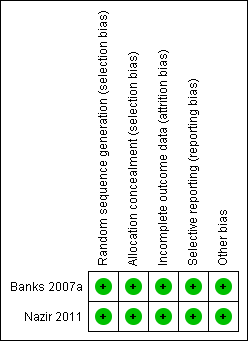Adhesivos para los tubos molares cementados durante el tratamiento con aparatología fija
Información
- DOI:
- https://doi.org/10.1002/14651858.CD008236.pub3Copiar DOI
- Base de datos:
-
- Cochrane Database of Systematic Reviews
- Versión publicada:
-
- 23 febrero 2017see what's new
- Tipo:
-
- Intervention
- Etapa:
-
- Review
- Grupo Editorial Cochrane:
-
Grupo Cochrane de Salud oral
- Copyright:
-
- Copyright © 2017 The Cochrane Collaboration. Published by John Wiley & Sons, Ltd.
Cifras del artículo
Altmetric:
Citado por:
Autores
Contributions of authors
Declan Millett was responsible for the conception of the review.
The first draft of the review was written by Declan Millett and Anne‐Marie Glenny , with comments from Joy Hickman, Rye Mattick and Nicky Mandall.
Sources of support
Internal sources
-
University Dental School and Hospital, Wilton, Cork, Ireland.
-
School of Dentistry, The University of Manchester, Manchester, UK.
-
Newcastle Dental Hospital, Newcastle upon Tyne, UK.
-
Glan Clwyd Hospital, Rhyl, UK.
External sources
-
National Institute for Health Research (NIHR), UK.
This project was supported by the NIHR, via Cochrane Infrastructure funding to Cochrane Oral Health. The views and opinions expressed herein are those of the review authors and do not necessarily reflect those of the Systematic Reviews Programme, the NIHR, the NHS or the Department of Health.
-
Cochrane Oral Health Global Alliance, Other.
The production of Cochrane Oral Health reviews has been supported financially by our Global Alliance since 2011 (oralhealth.cochrane.org/partnerships‐alliances). Contributors over the past year have been the British Association for the Study of Community Dentistry, UK; the British Society of Paediatric Dentistry, UK; the Canadian Dental Hygienists Association, Canada; the Centre for Dental Education and Research at All India Institute of Medical Sciences, India; the National Center for Dental Hygiene Research & Practice, USA; New York University College of Dentistry, USA; and NHS Education for Scotland, UK.
Declarations of interest
Declan T Millett: none known.
Nicky A Mandall: none known.
Rye CR Mattick: none known.
Joy Hickman: none known.
Anne‐Marie Glenny: none known. Anne‐Marie Glenny is an editor with Cochrane Oral Health.
Version history
| Published | Title | Stage | Authors | Version |
| 2017 Feb 23 | Adhesives for bonded molar tubes during fixed brace treatment | Review | Declan T Millett, Nicky A Mandall, Rye CR Mattick, Joy Hickman, Anne‐Marie Glenny | |
| 2011 Jun 15 | Adhesives for bonded molar tubes during fixed brace treatment | Review | Declan T Millett, Nicky A Mandall, Rye CR Mattick, Joy Hickman, Anne‐Marie Glenny | |
| 2010 Jan 20 | Adhesives for bonded molar tubes during fixed brace treatment | Protocol | Declan T Millett, Nicky A Mandall, Rye CR Mattick, Joy Hickman, Anne‐Marie Glenny | |
Notes
This review will not be updated until a substantial body of evidence on the topic becomes available. If trials are conducted and found eligible for inclusion in the future, the review would then be updated accordingly.
Keywords
MeSH
Medical Subject Headings (MeSH) Keywords
Medical Subject Headings Check Words
Humans;
PICO

Risk of bias graph: review authors' judgements about each risk of bias item presented as percentages across all included studies.

Risk of bias summary: review authors' judgements about each risk of bias item for each included study.

Comparison 1 Molar tubes versus molar bands, Outcome 1 Failure at tooth level.

Comparison 1 Molar tubes versus molar bands, Outcome 2 Failure at participant level.

Comparison 1 Molar tubes versus molar bands, Outcome 3 Decalcification (participant level).
| Outcome or subgroup title | No. of studies | No. of participants | Statistical method | Effect size |
| 1 Failure at tooth level Show forest plot | 2 | Hazard Ratio (Fixed, 95% CI) | 2.92 [1.80, 4.72] | |
| 2 Failure at participant level Show forest plot | 2 | 186 | Risk Ratio (M‐H, Fixed, 95% CI) | 2.30 [1.56, 3.41] |
| 3 Decalcification (participant level) Show forest plot | 1 | 74 | Risk Ratio (M‐H, Random, 95% CI) | 1.85 [1.22, 2.79] |

